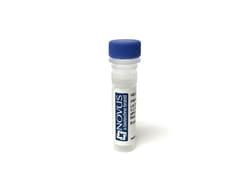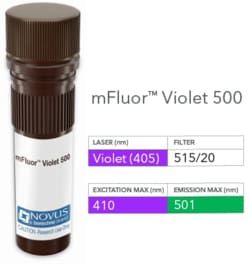EpCAM/TROP1 Antibody (EGP40/1372), DyLight 488 - (ECD), Novus Biologicals™
Manufacturer: Novus Biologicals
Select a Size
| Pack Size | SKU | Availability | Price |
|---|---|---|---|
| Each of 1 | NBP254419G-Each-of-1 | In Stock | ₹ 57,494.00 |
NBP254419G - Each of 1
In Stock
Quantity
1
Base Price: ₹ 57,494.00
GST (18%): ₹ 10,348.92
Total Price: ₹ 67,842.92
Antigen
EpCAM/TROP1
Classification
Monoclonal
Conjugate
DyLight 488
Formulation
50 mM sodium borate with 0.05% sodium azide
Gene Symbols
EPCAM
Immunogen
Recombinant fragment from the extracellular domain of human EpCAM/TROP1 protein (around aa100-224) (exact sequence is proprietary) (Uniprot: P16422 )
Research Discipline
Cancer, Cancer Stem Cells, Tumor Biomarkers
Gene ID (Entrez)
4072
Target Species
Human
Isotype
IgG1 κ
Applications
Western Blot, Flow Cytometry, Immunohistochemistry, Immunocytochemistry, Immunofluorescence, Immunohistochemistry (Paraffin)
Clone
EGP40/1372
Dilution
Western Blot, Flow Cytometry, Immunohistochemistry, Immunocytochemistry/Immunofluorescence, Immunohistochemistry-Paraffin
Gene Alias
17-1A, 323/A3, ACSTD1, antigen identified by monoclonal AUA1, CD326 antigen, Cell surface glycoprotein Trop-1, chromosome 4, surface marker (35kD glycoprotein), DIAR5, EGP, EGP-2, EGP314, EGP40, EpCAM, epithelial cell adhesion molecule, Epithelial cell surface antigen, Epithelial glycoprotein, Epithelial glycoprotein 314, ESA, GA733-2EGP34, hEGP314, HNPCC8, KS 1/4 antigen, KS1/4, KSAHEA125, M1S2, M4S1Ly74, Major gastrointestinal tumor-associated protein GA733-2, MIC18MH99, MOC31, TACST-1, TACSTD1, TROP1CD326, Tumor-associated calcium signal transducer 1CO-17A
Host Species
Mouse
Quantity
0.1 mL
Primary or Secondary
Primary
Test Specificity
EGP40 is a 40-43kDa transmembrane epithelial glycoprotein, also identified as epithelial specific antigen (ESA), or epithelial cellular adhesion molecule (Ep-CAM). It is expressed on baso-lateral cell surface in most simple epithelia and a vast majority of carcinomas. This antibody has been used to distinguish adenocarcinoma from pleural mesothelioma and hepatocellular carcinoma. This antibody is also useful in distinguishing serous carcinomas of the ovary from mesothelioma.
Content And Storage
Store at 4°C in the dark.
Description
- EpCAM/TROP1 Monoclonal specifically detects EpCAM/TROP1 in Human samples
- It is validated for Western Blot, Flow Cytometry, Immunohistochemistry, Immunocytochemistry/Immunofluorescence, Immunohistochemistry-Paraffin.


